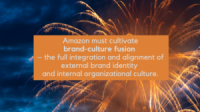How to Engage Employees
The principles in my book, What Great Brands Do: The Seven Brand-Building Principles That Separate the Best from the Rest can be applied to employees, employee experience, and employee engagement. For example, in WGBD, I explain that Great Brands Avoid Selling Products. Instead of simply focusing on selling products or services to customers, great brands […]









